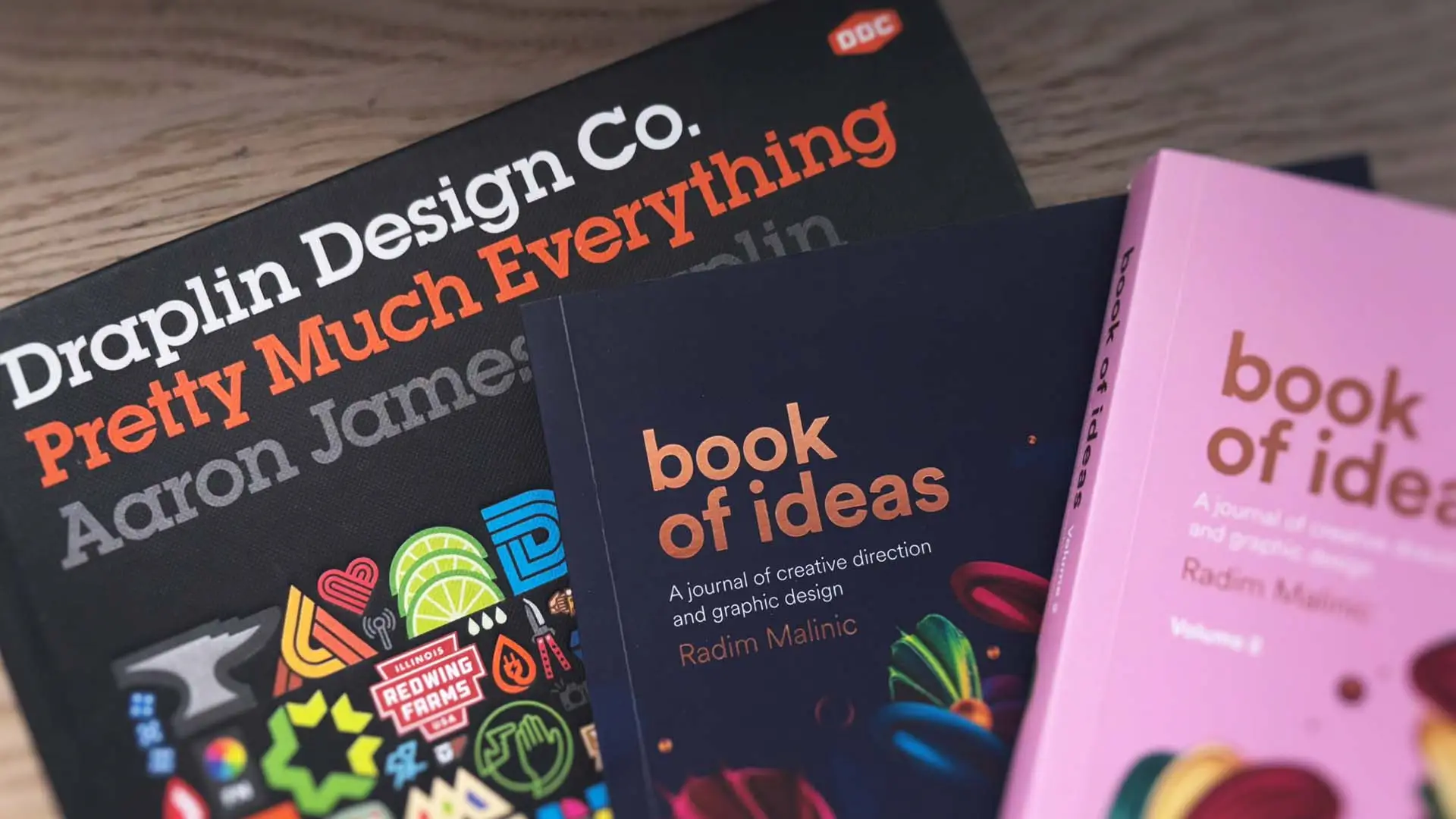Introduction
Your brand identity is the foundation for your business and the key to establishing a successful brand. It’s important to create a recognisable and memorable brand identity that stands out from your competition and resonates with your target market. In this article, we will discuss the importance of good branding and identity in graphic design and look at strategies to achieve a stand-out brand identity. We will cover understanding brand identity, finding the right target audience, leveraging logos and colour schemes, creating relevant and distinctive stories, and establishing trust with customers. With the right strategy, you can have a unique and effective brand identity that will help you succeed in your business.
Understanding Brand Identity
Developing a successful brand identity is essential to the success of any business. It should be recognisable and memorable, allowing it to stand out from competitors and capture the attention of potential customers. Graphic design plays a key role in achieving a stand-out brand identity, and understanding how to use it effectively is key.
The first step to creating a successful brand identity is to understand the purpose behind it. Who is the target market and what should the brand communicate to them? Answering these questions will help to shape the design and create something that will attract the right audience.
The next step is to create a logo that will become instantly recognisable and can be used in a variety of different materials and media. Elements such as colour, font and imagery should be carefully chosen and represent the brand’s values and mission. Establishing a brand voice is also important, as it helps to ensure that all communication from the company is cohesive and consistent.
Graphic design isn’t only about the logo, and it’s important to consider how other elements such as advertisements, business cards and websites can also be used to develop the brand identity. Storefronts, packaging and signage can also be used to create a strong visual presence.
Developing a stand-out brand identity is essential for any business, and understanding how to use graphic design effectively is essential. By carefully considering each aspect of the design, it’s possible to create something that will be instantly recognisable and memorable.
Problems with branding
Branding is an important part of any successful business and is a key factor in establishing a business’s long-term success. It is essential for businesses to have an effective and eye-catching brand identity in order to stand out from the competition. Unfortunately, many businesses have fallen short when it comes to branding, leading to a lack of recognition from their target market.
One of the most common problems with branding is having an unrecognisable or forgettable logo. Without a logo that is both recognisable and memorable, customers may not even remember the company’s name and will be less likely to return. This can be especially damaging for businesses that rely on repeat customers. For example, a restaurant that has an unrecognisable logo may struggle to build its reputation and customer base. To prevent this, businesses should ensure that their logo is unique and easily recognisable.
Another problem with branding is the lack of consistency in a company’s branding materials. Without consistent branding across all marketing materials, customers may struggle to remember the company’s name and logo. This can make it difficult to build a consistent customer base and can lead to brand confusion. To ensure consistency, businesses should create a unified brand image that is used across all marketing materials.
Finally, businesses should ensure that their branding appeals to their target market. Without an effective brand identity, customers may not be interested in a business’s product or service. To ensure that the branding is effective, businesses should tailor their branding to the needs of their target market. Businesses should also adjust their branding if their target market’s needs change.
By understanding and addressing the common problems with branding, businesses can create an effective brand identity that helps them stand out from the competition. Effective brand identity will help businesses attract more customers, build brand recognition and loyalty, and create a strong presence in the market.
Finding the right target audience
Creating a stand-out brand identity is essential for businesses, especially in the digital age. With the competition ever-increasing, it’s vital for businesses to stand out from the crowd and attract customers. The key to achieving a successful brand identity starts with finding the right target audience.
The very first step in finding a target audience is to identify the business’s goals and objectives. Knowing these objectives will help businesses to define the target audience they should be targeting. For example, if the main goal of a business is to increase sales, the target audience should be those who are likely to purchase the product or service.
Once businesses have identified their objectives and the right target audience, they can then begin to create a brand identity that reflects their goals and objectives. This includes designing a logo, slogan and other visuals that will capture the attention of their target audience. It’s important to ensure that the logo, visuals and message reflect the company’s values and personality. This helps to make the brand more recognisable and memorable.
In order to create a stand-out brand identity, businesses should have a clear understanding of their target audience. This will allow them to create visuals and messages that will appeal to their target market and create a strong and memorable brand identity. With the right branding strategy, businesses can achieve maximum success in the digital age.
Standing out from your competition
Creating a stand-out brand identity for your business can be a daunting task. Whether you’re a start-up or an existing business, having visual elements that are recognisable and memorable can make the difference between success and failure. Graphic design plays a crucial role in creating a unique and powerful brand image that will set you apart from the competition.
The first step in creating a stand-out brand identity is to define who your target market is. Knowing who your audience is will help to inform the design and ensure that it resonates with the right people. Once you know your target audience, you can start to create a logo and other visual elements that will capture their attention and make an impression.
The logo is often the most recognisable element of a brand identity and it is essential that it be well-designed. A logo should be simple, yet impactful and should be designed with the target market in mind. It should also be versatile, scalable and easy to remember.
The other visual elements of a brand identity, such as colour palette, typography, images, shapes and textures, should also be carefully considered. When used strategically, these elements can create a powerful brand image that customers will associate with your business.
Finally, think about how to position your brand in the market. Think about how you want your customers to perceive your business, and use graphic design to create visuals that will help to achieve this.
Creating a stand-out brand identity with graphic design can be challenging, but with careful thought and a good eye for design, you can create a powerful identity for your business that will help you stand out from the competition.
The importance of graphic design
Achieving a stand-out brand identity is essential for any business and graphic design plays an important role in this. In this article, we will explore how graphic design can be used to create a unique and recognizable brand identity, with a focus on leveraging logos and colour schemes. By understanding the power of graphic design, businesses can create a strong and memorable brand identity.
Leveraging logos and colour schemes
Logos and colour schemes are two of the most important components to leverage in graphic design to achieve a stand-out brand identity. A logo is a visual representation of a company, product, or service and it is one of the most important tools to foster recognition of a brand. Logos need to be designed with great care so that they are recognisable, memorable, and eye-catching. A logo should also be designed to appeal to the target market for the brand and to convey the desired message or values of the brand.
Colour schemes are also a major factor in creating a memorable brand identity. Studies have shown that certain colours can evoke certain emotions in viewers, so it is important to use colours that will resonate with the target market and reflect the desired brand identity. Using the same colours in all marketing materials and product packaging can create a powerful and unified brand identity, and help customers easily recognize a company’s products and services.
Overall, logos and colour schemes are essential components to leverage in graphic design to achieve a stand-out brand identity. When designing a logo and a colour scheme, it is important to keep the target market in mind, as well as the desired message or values of the brand. By leveraging logos and colour schemes in graphic design, a company can create a powerful and recognisable brand identity that will help to increase visibility, customer loyalty, and sales.
Creating Visual Consistency Across Your Brand Platforms
Creating visual consistency across your brand platforms is essential to achieving a stand-out brand identity. By utilizing graphic design, you can ensure that your logo, colour scheme, typography, and other visuals accurately represent your brand and target market. Having a recognisable and memorable logo and identity will help establish your brand and set it apart from the competition.
The best way to ensure visual consistency is to develop a brand style guide. This document should contain all of your graphic design elements, such as logo sizes, colour palettes, typography, and so on. Additionally, you should use graphic design software to create your visuals, making sure to keep all designs consistent with your style guide.
Finally, it’s important to review and update your brand identity often. As your business evolves, your visual identity should reflect it. Having up-to-date visuals will ensure that your brand is always on-trend and relevant to your target market.
By following these steps, you can create a stand-out brand identity that is recognised, memorable, and unique. With a strong, consistent visual identity across all of your platforms, you can establish a strong and identifiable presence that will help your business stand out from the competition.
Solution: a creative and unique brand identity
Having a stand-out brand identity can be a great asset for any business. Graphic design is one of the key tools for achieving this goal and creating a unique brand identity. In this section, we will look at strategies for crafting a relevant and distinctive story, creating useful visual content, and establishing trust with customers. By following these steps, businesses can create a creative and unique brand identity that stands out from the competition.
Crafting a relevant and distinctive story
When it comes to creating a standout brand identity for your business, crafting a relevant and distinctive story is essential. Aside from just creating a logo, the key to success is to create an engaging narrative that your target market can relate to.
A memorable brand identity begins with an understanding of your target market, their preferences, and their expectations. By gaining an understanding of what they would appreciate and respond to, you’ll be able to create a logo, colours, and visual elements that will resonate with them.
Your logo should be iconic and instantly recognisable. It should incorporate your brand’s core values, be modern yet timeless, and evoke a feeling of trust and credibility.
Colour plays an important role in creating a strong brand identity. The colours you choose should be consistent with your brand’s mission and represent the feeling and message you want to convey. Additionally, the colours should be timeless and remain consistent across all mediums.
Fonts are another important element for creating a unique brand identity. They should be used consistently throughout all mediums and should reflect the brand’s message and values.
The use of photography and illustration should be employed to create a story that your target market can relate to. These visuals should reflect the culture of your brand and capture the feeling of what you want to convey.
Finally, social media presence should be an integral part of your branding strategy. By engaging with your target market and creating content that resonates, you’ll be able to make meaningful connections with your audience and create a memorable brand identity.
By taking the time to craft a relevant and distinctive story, you’ll be able to create a brand identity that will be recognisable and memorable for your target market. By following these steps, you’ll be able to create a unique and successful brand identity for your business.
Creating useful visual content
Creating useful visual content is essential in order to achieve a stand-out brand identity. People increasingly rely on visuals as a source of information, so it’s important that brands invest in creative designs that will help them stay ahead of their competition. Graphic design can be used to create logos, patterns, colours, and fonts that are uniquely associated with a brand, making it recognisable and memorable.
For example, a recognisable logo is the foundation of a successful brand identity. A logo should be simple yet eye-catching, and it should effectively communicate the core values and message of the brand. It should be designed with the target market in mind – for example, if the target audience is younger people, the logo should be more vibrant and youthful. Once the logo has been designed, it can be used on all promotional materials such as business cards, websites, and social media platforms.
In addition to logos, other visual elements such as patterns and colours should be used to create a cohesive theme throughout all of the brand’s visuals. These elements can be used to give a brand a unique look that will be easily recognisable and memorable.
Creating a strong brand identity is essential for any business. Graphic design can be used to create a unique, recognisable, and memorable identity that will help the brand stand out from the competition. With the help of a professional designer, businesses can create visuals that will effectively communicate their message to the target audience.
Establishing trust with customers
Creating a unique brand identity is a key component of building a successful business. A strong brand identity not only helps to differentiate a company from its competitors but also allows customers to easily recognise and remember it. Establishing trust with customers is an important part of creating a strong brand identity, as it helps to foster loyalty and build a positive reputation.
Graphic design is one of the most effective ways to establish trust with customers. A well-designed logo can create a recognisable and memorable image that customers can associate with the company. A professional logo gives customers the impression that the company is trustworthy and competent. In addition, customised visuals such as illustrations, fonts, and colour palettes can help to create a unique, cohesive brand identity that can be easily identified.
When creating a brand identity, it is important to consider the target market. Different demographics will respond to different visual cues, so understanding the preferences of the target audience can help to create an identity that resonates with them. It is also important to ensure that the visuals are consistent across various platforms, such as websites, social media, print materials, etc. This will help customers to recognise the company and build a sense of trust.
In conclusion, graphic design is an effective way to create a unique and recognisable brand identity. A well-designed logo and customised visuals can help to establish trust with customers, foster loyalty, and build a positive reputation. It is important to consider the target market when creating a brand identity and to ensure that visuals are consistent across various platforms. By following these steps, businesses can create a stand-out brand identity that will help to differentiate it from its competitors.
Conclusion
Creating a stand-out brand identity for your business is no small task. It requires a great deal of thought, creativity, and effort. Graphic design plays an essential role in building a successful and memorable brand identity by helping to communicate your values in a visually appealing and meaningful way. From understanding your target audience and their needs to leveraging logos, colours and other visual elements to create consistency across your platforms, graphic design can help make your brand stand out from the competition. Through meaningful stories and useful visual content, your graphics can help establish trust with your customers and help them to recognize and remember your brand. By taking the time to develop an effective brand identity through graphic design, businesses can create a tangible connection with their customers and set themselves apart from the competition.





